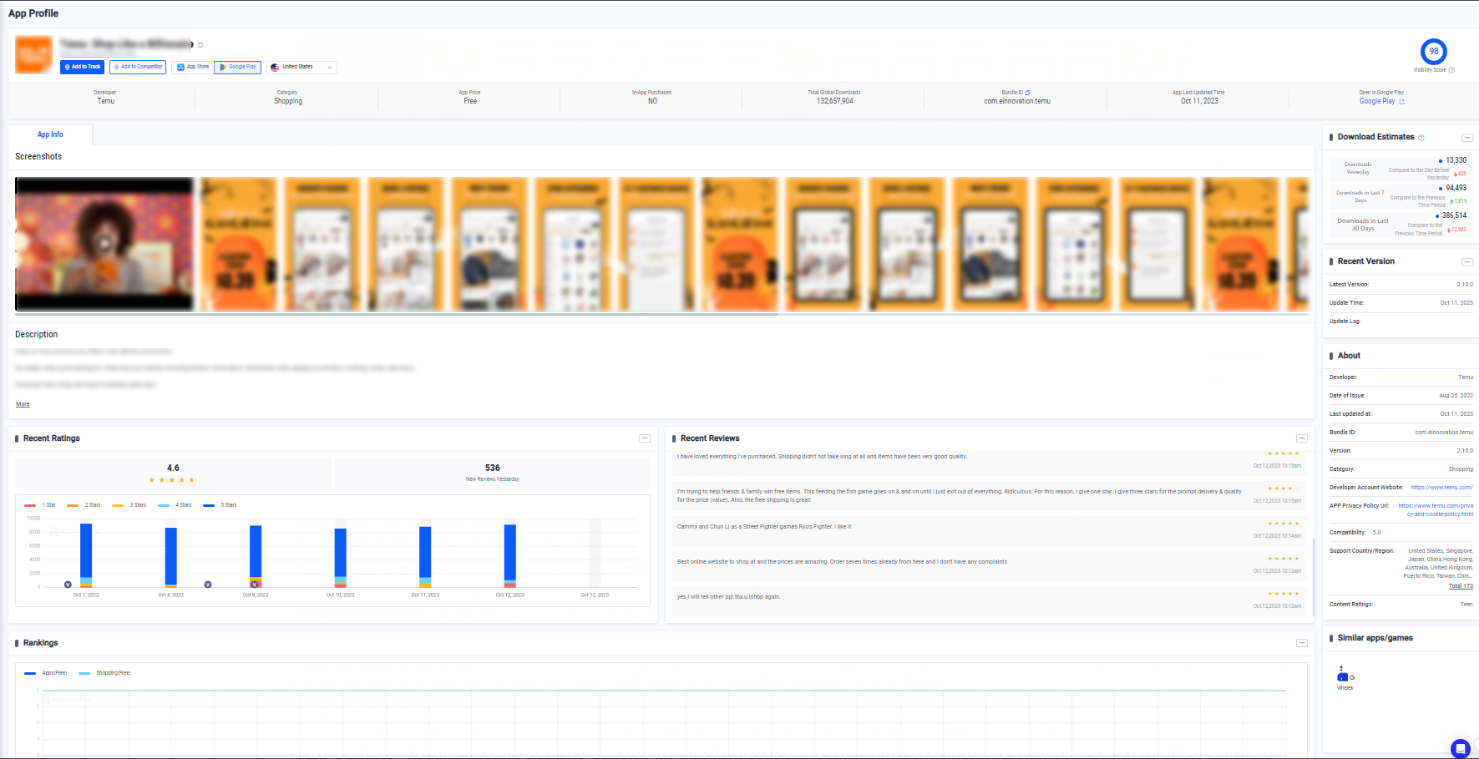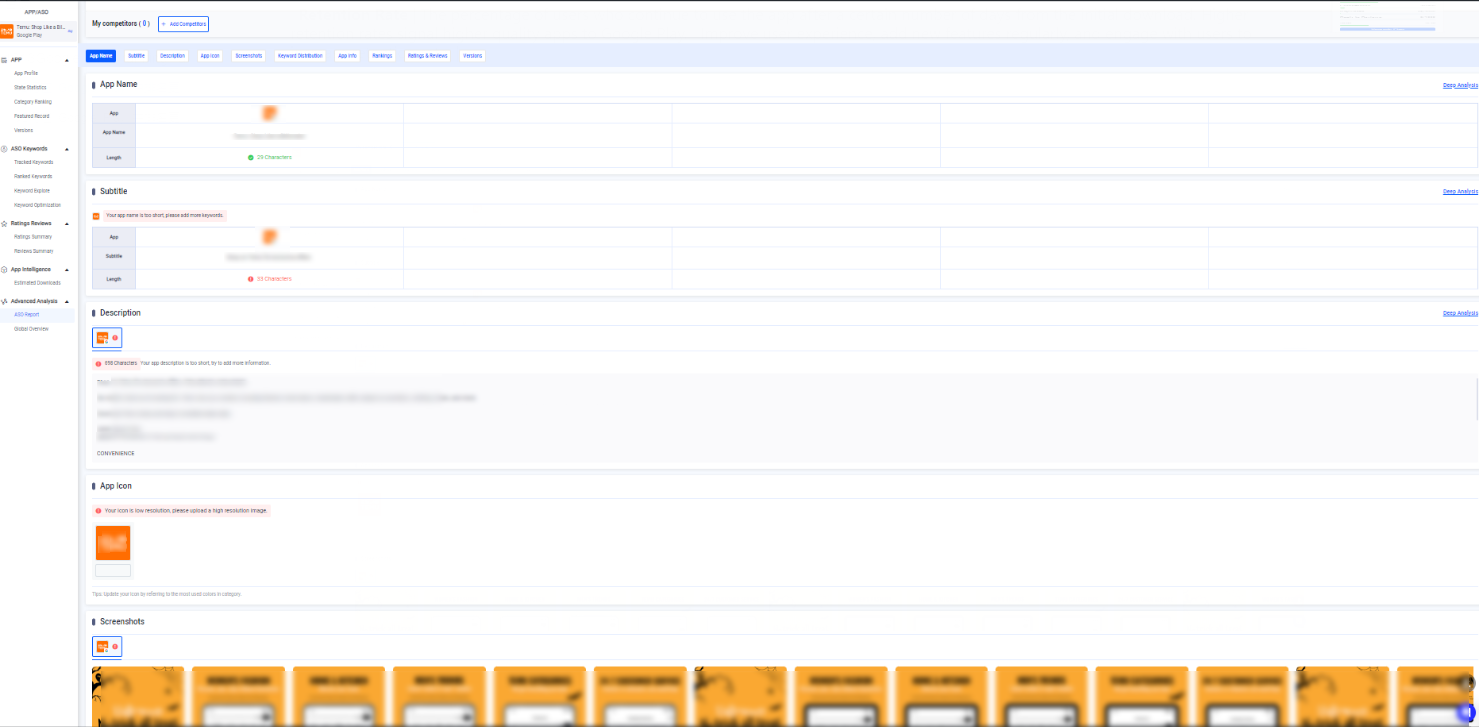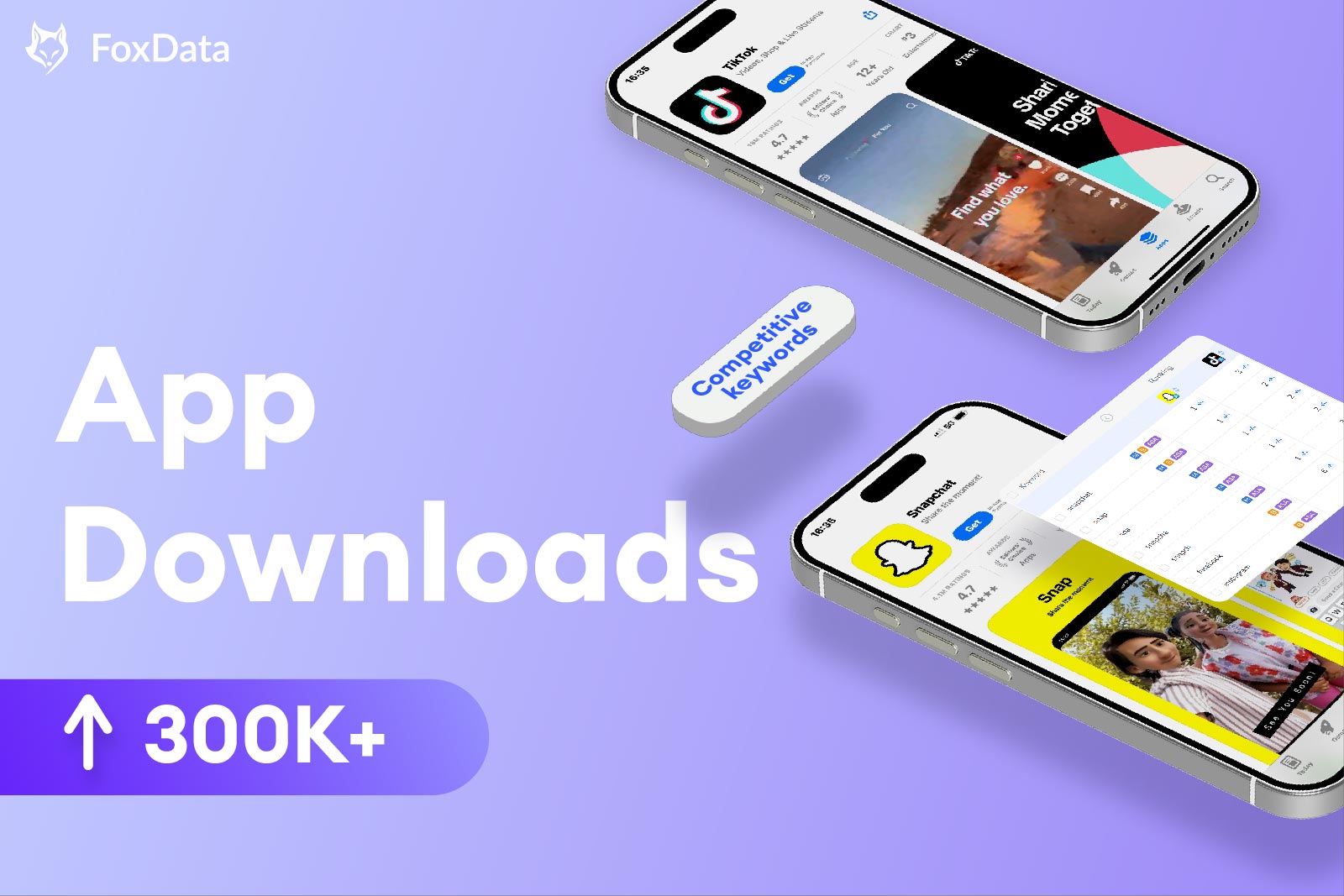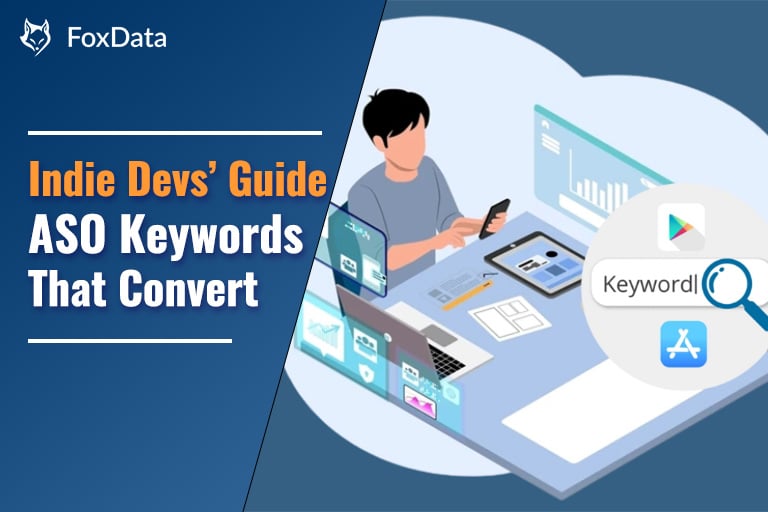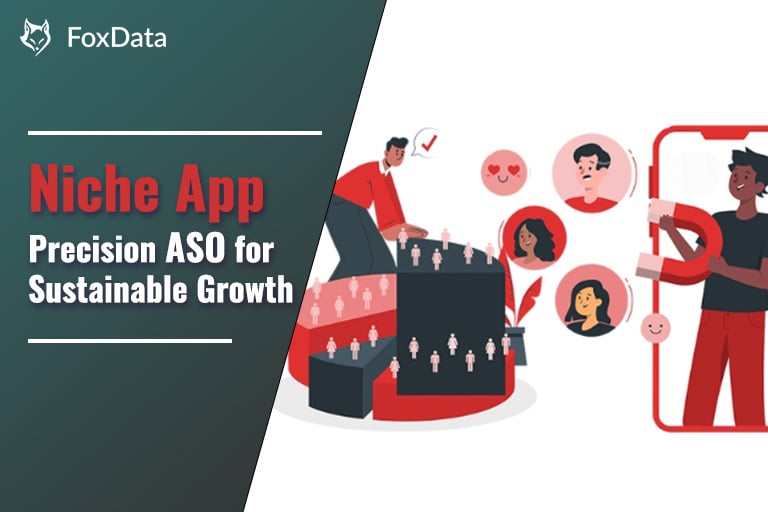How to Boost Your App's Ranking on the Google Play Store?
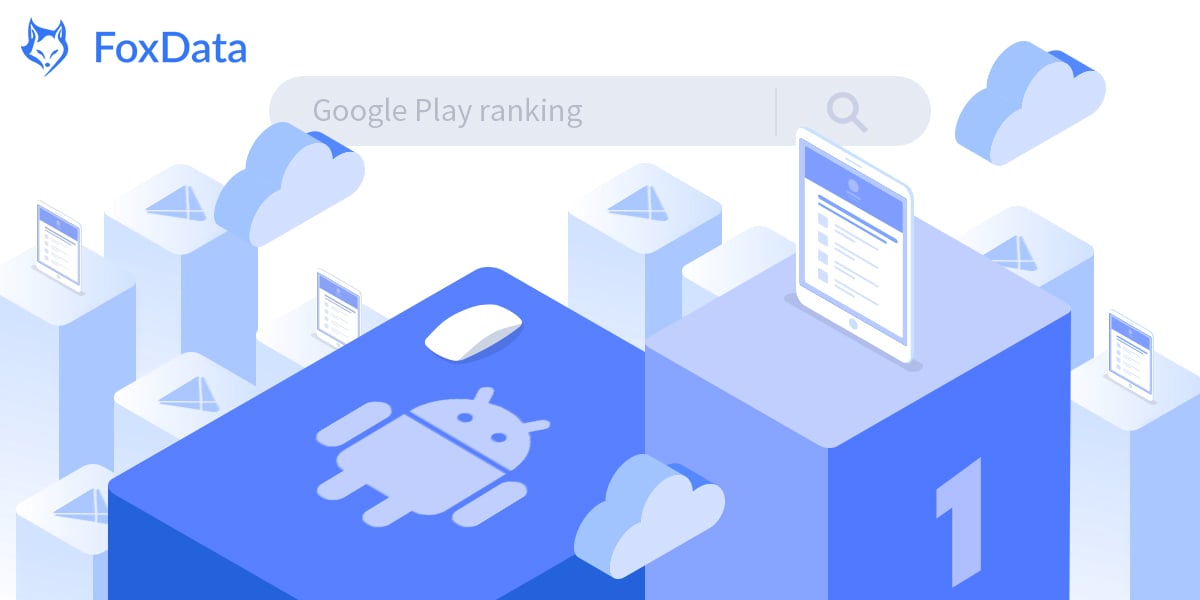
In the vast expanse of the mobile app marketplace, securing a top spot on the Google Play Store is a coveted achievement for app developers. However, climbing the ladder of Google Play Store rankings isn't a walk in the park. It requires a deep understanding of ranking factors, meticulous planning, and continuous optimization efforts. This article aims to guide you through the process of achieving higher rankings on the Google Play Store, providing insights into the critical ranking factors and how to leverage them effectively.
Google Play Store Ranking Factors
Before embarking on the journey to improve your app's ranking, it's crucial to comprehend what influences the Google Play Store's ranking algorithm. Armed with this knowledge, you can target your optimization efforts more effectively, filling gaps and enhancing your app's visibility.
App profile in Google Play from FoxData
The Google Play Store's ranking algorithm considers several factors, including the app's title, description, user ratings, reviews, number of downloads, and uninstall rate.
Other considerations include the frequency of app updates, user engagement, app icons and screenshots, app size, localization, download velocity, and retention rate.
| App Title | The title should be catchy and contain the main keywords. It's one of the first things users notice. |
Research relevant keywords and incorporate them into a catchy, concise title. |
| Short Description | A concise summary of what the app does. It should contain relevant keywords and be attractive to potential users. |
Focus on the app's unique selling points and benefits, using keywords naturally. |
| Long Description | A detailed explanation of the app's features, benefits, and functionality. It should be keyword-rich and user-friendly. |
Use bullet points for readability, highlight major features, and include keywords. |
| App Reviews & Ratings | User reviews and ratings significantly influence an app's ranking. Positive reviews and high ratings improve visibility. |
Encourage users to rate and review your app, and respond to negative reviews constructively. |
| App Downloads & Uninstalls | The number of downloads directly affects the ranking. A high number of uninstalls can negatively impact the ranking. |
Improve user experience to increase downloads and reduce uninstalls. Monitor feedback to identify issues. |
| App Updates | Regular updates signal to Google Play that the app is being maintained and improved, which can positively affect rankings. |
Regularly update your app with new features, bug fixes, and improvements. |
| User Engagement | The more users interact with the app (open, use, share), the higher the app will rank. |
Improve user interface and provide valuable content to increase user engagement. |
| App Icon & Screenshots | An attractive icon and screenshots can increase downloads, positively influencing the app's ranking. |
Design a unique, eye-catching app icon and use screenshots to showcase key features. |
| App Size | Smaller apps are more likely to be downloaded, especially in regions with slower internet speeds or limited storage on devices. |
Optimize your app's size by removing unnecessary resources and compressing images. |
| Localization | Translating the app's metadata and content into different languages can improve visibility and downloads in different regions. |
Use professional translation services to localize your app for different regions. |
| Download Velocity | The speed at which your app gains new downloads can influence its ranking, with faster velocities often leading to higher rankings. |
Promote your app through various channels to increase download velocity. |
| Retention Rate | The percentage of users who continue to use the app after a certain number of days from the initial download. Higher retention rates signal higher quality apps to Google Play. |
Improve user experience, add new features regularly, and engage with users to increase retention rate. |
ASO Report Diagnosis from FoxData
ASO Strategy
To climb higher in the Google Play Store rankings, you need a well-crafted App Store Optimization (ASO) strategy to guide your efforts and drive continuous improvement. Keywords play a significant role in ASO, contributing heavily to app store rankings. It's why you should pay special attention to the keyword optimization process.
We recommend the following key strategies:
Keyword Research:
Start by identifying potential keywords through conversations with industry experts, brainstorming with your team, or using specialized tools.
We offer expert ASO services and provide a mobile app analysis solution driven by data. Our diverse range of keyword discovery and optimization services can help you find the right keywords for your app.
Get started with your free trial today!
Keyword Classification and Prioritization:
Once you have a list of potential keywords, it's time to categorize and prioritize them based on relevance, popularity, and competition. This process will help you decide how and where to position these keywords to maximize their impact.
Recommended Reading: How to Perform ASO Keyword Research and Increase App Visibility
Monitor and Measure:
Keep track of your efforts and measure their impact. Use analytical tools to monitor keyword performance and adjust your strategy as needed.
Continuous Optimization:
ASO is not a one-time effort. It requires continuous monitoring and optimization to stay ahead of the competition.
Conclusion
Achieving a higher ranking on the Google Play Store is a blend of strategic planning, continuous optimization, and a deep understanding of ranking factors. By focusing on these aspects, you can effectively improve your app's visibility and reach a wider audience. Remember, ASO is a journey, not a destination.
Welcome to read more blog about ASO Strategies.
Or you may want to optimize your app now; just join FoxData and start your keyword research! Get started with your free trial today!
Or do you want to find a professional team to increase your app's user acquisition? FoxData's sub-brand, FoxAdvert, tailors App Store Optimization services to fit your unique goals!


